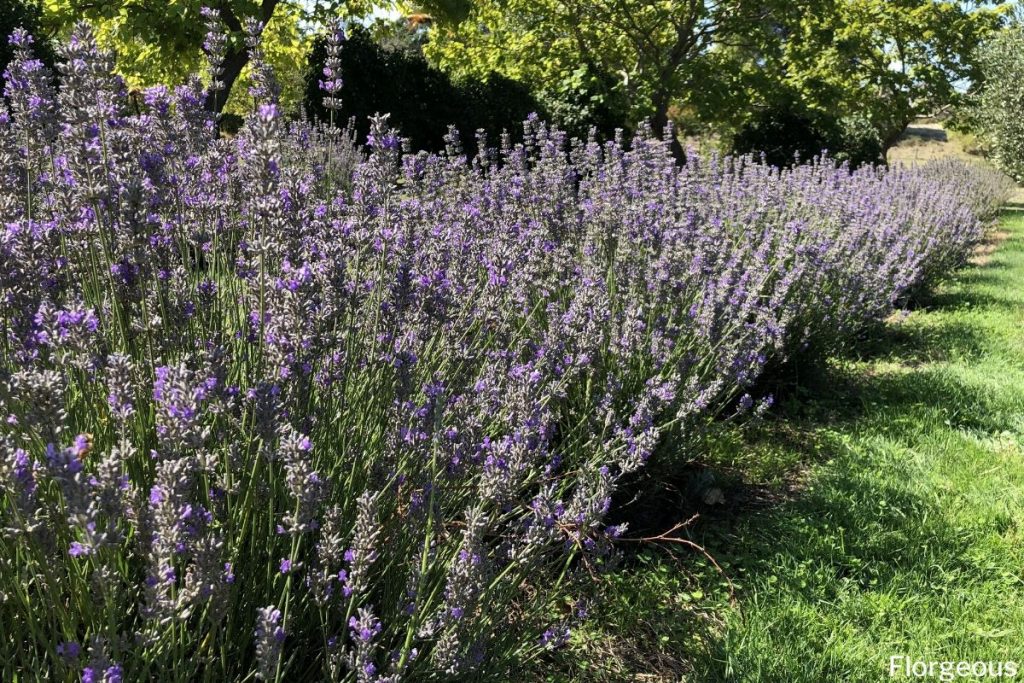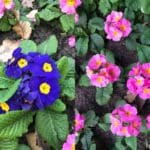Have you ever seen a field of lavenders? You were probably able to smell them from far away, as these flowers are known for having a mesmerizing scent.
- Lavender Flower Facts
- Lavenders: Name, Origin, and History
- General Description and Characteristics of Lavender Flowers
- Types of Lavender Flowers
- Growing Lavenders: Everything You Need To Know
- Benefits and Uses of Lavenders
- Common Questions About Lavender Flowers
Lavender flowers are wonderful and beautiful. If you are thinking about growing lavender in your home or backyard, then you have made the right choice, because this type of flower is known for its hardiness, longevity, and easiness to handle.
Lavenders have vivid colors and, surely, they will look amazing in your home. Continue reading and find out everything you need to know about lavenders.
Lavender Flower Facts
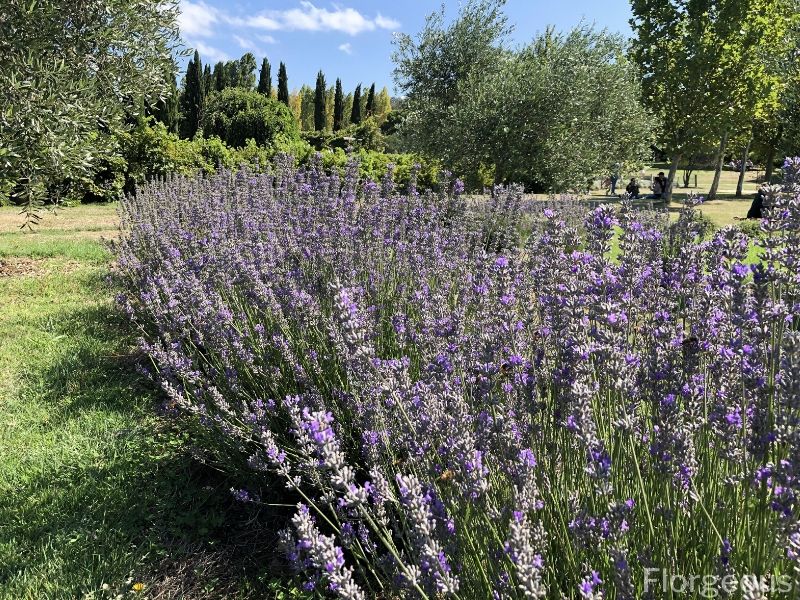
Lavandula, also known as lavender, is related to the mint family, more specifically, to the Lamiaceae. They have a genus of almost 50 known species that have flowering plants.
Even though it is native to Africa, Asia, and Europe, nowadays it can be found everywhere in the world.
Lavenders: Name, Origin, and History
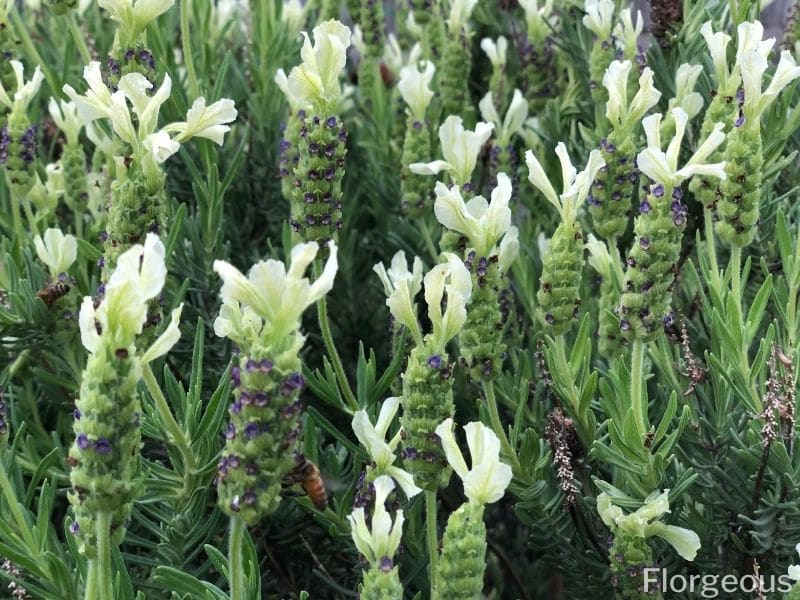
The name Lavender is thought to have come from the Old French word ‘’lavandre’’, which, in turn, derived from the Latin word ‘’lavare’’, which means to wash.
Romans would use this plant to wash, but, they also used it to wash their clothes and beds, as the smell they left behind was really nice (1).
This type of flower dates back to at least 2,500 years. Historians have stated that they have seen it in the Mediterranean, India and even the Middle East (2).
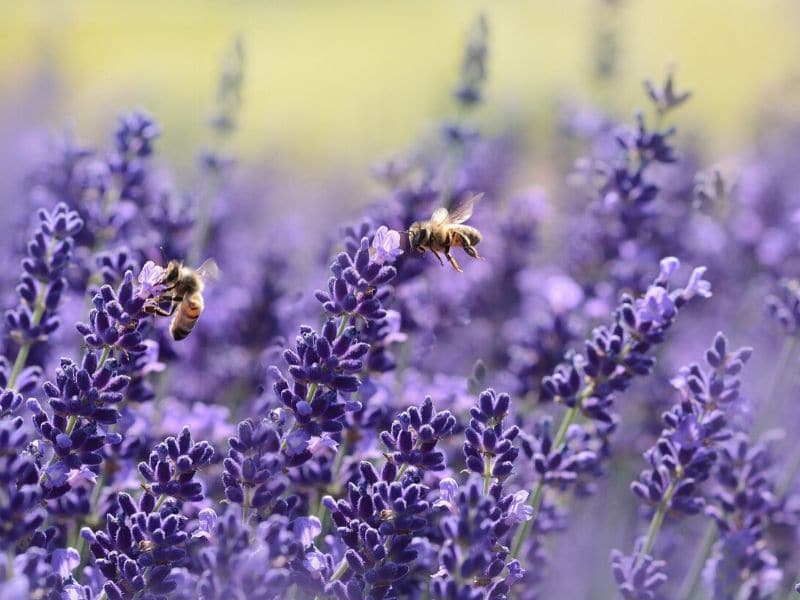
Another interesting thing is that Lavenders are related to other herb plants such as basil, rosemary, and thyme.
General Description and Characteristics of Lavender Flowers
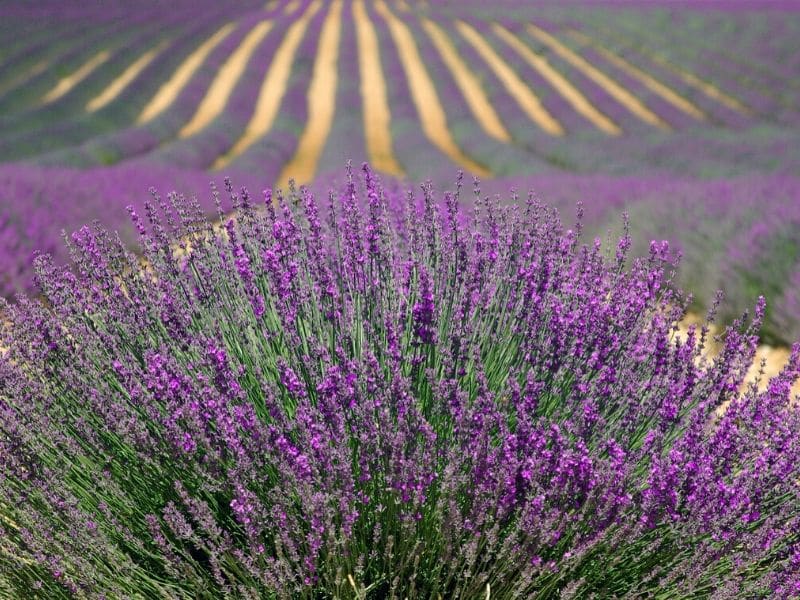
Lavender Flower Description
Lavender flowers are usually lilac, blue or purple. These types of plants are very small and can be propagated by simply spreading their roots.
They sometimes have grey or green leaves and they can live up to 20 years.
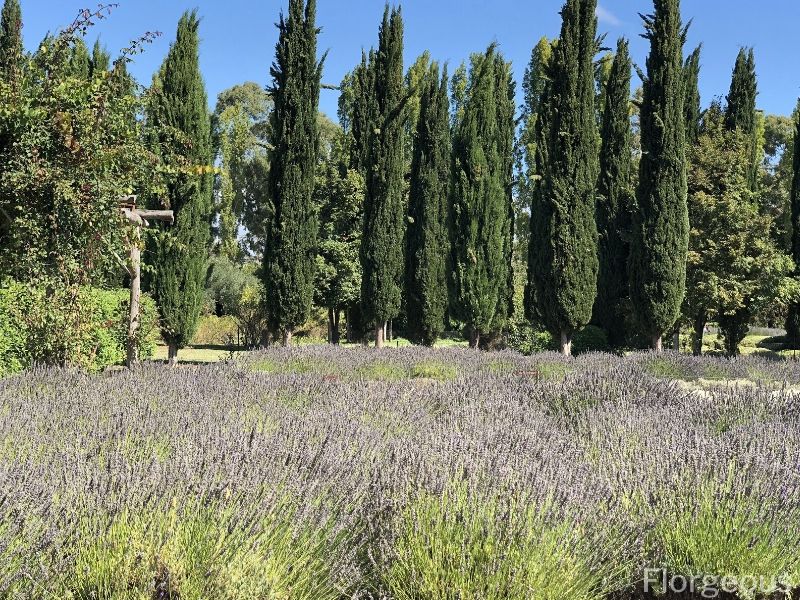
Types of Lavender Flowers
Here are the most common types of Lavender flowers you will ever find:
Spanish Lavenders, (Lavandula Stoechas)
The Spanish Lavenders resemble a pineapple fruit. They love hot weather but can tolerate humidity as well.
They are the following:
Ballerina
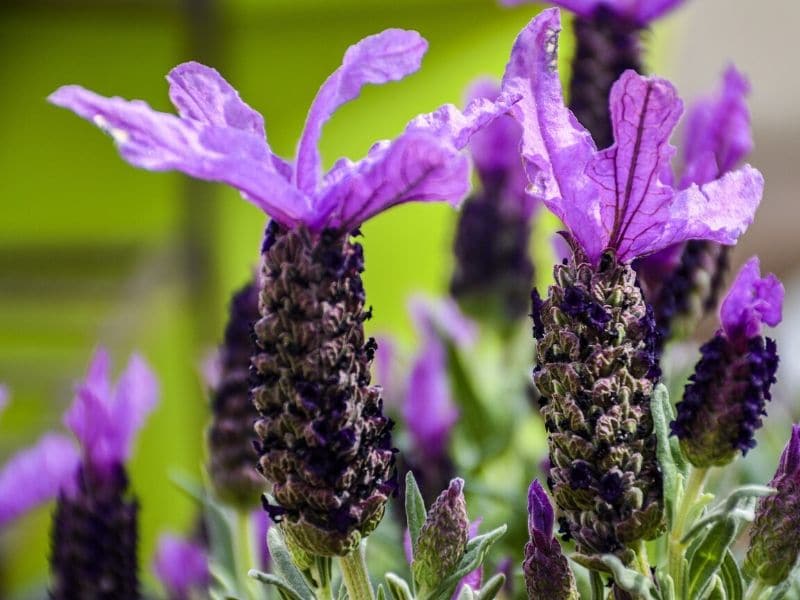
The Spanish Lavender is very unique because they have distinctive bulbs. Also, they bloom white flowers that sometimes turn to pink or purple.
They tend to bloom twice a year and they love the sun. Their scent is very strong.
Kew Red
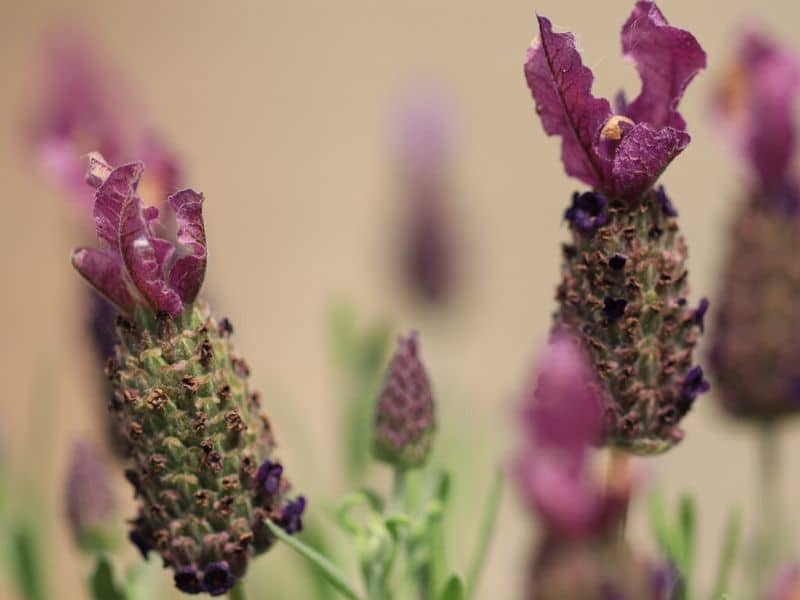
This type of Lavender flower has dark pink petals on top, which are often seen as red. The scent they release is very strong.
The flowering season is long for this variety, as it lasts from late spring to late fall.
In some areas of the world, these types of flowers can be seen all-year-round. They love the sun, and they don’t require a lot of water.
Anouk
Thanks to its strong scent, this type of Lavender flower loves to attract bees and butterflies. It has silver foliage and it is also very resistant to plagues and droughts.
They love to have full, direct sun, and they will thrive in medium-dry soil. It can grow up to 2 feet in height, and they are suitable for warmer weather.
Regal Splendor
With violet-blue flower heads and long pink-purple flowers on top, the contrast is stunning and sure to catch people’s attention. They are deer and rabbit resistant and the Regal Splendor grows up to 30 inches tall and is a magnet for butterflies and bees.
Fathead
They are long-lasting flowers with round petals. Their color is usually dark purple or pink and they love to be placed under direct sun.
English Lavenders, (Lavandula Angustifolia)
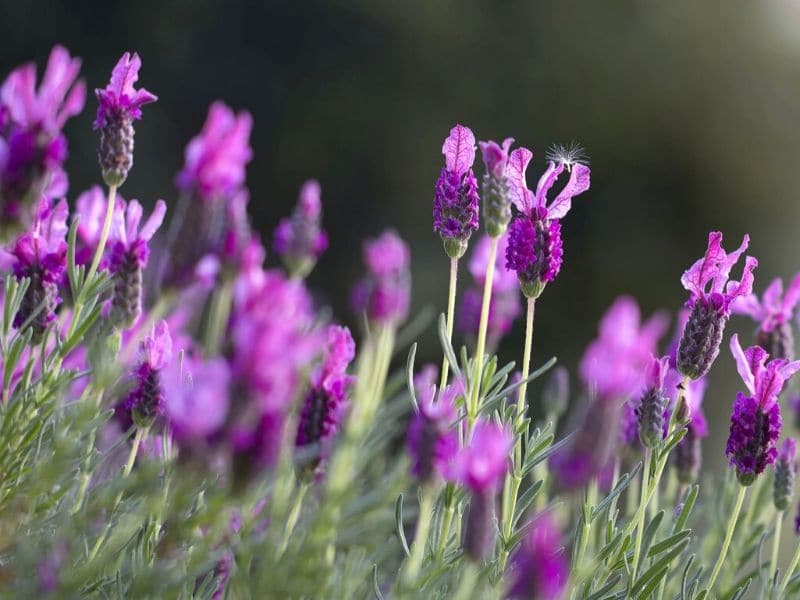
This type of lavender did not originate in England but its name was given there. They are very fragrant, although, they have a different aroma from the rest of the lavenders.
The cluster of flowers that can be found on each stem is often referred to as inflorescences. They are great for making essential oils (4).
The subtypes are the following:
Miss Katherine
These flowers have a deep pink color. It loves to be directly under the sun. Since many of them are together, then they can last a long time, because they help each other survive.
Little Lottie
The quintessential English Lavender, this type of flower has won many awards. Its flowers are light pink and they look like spikes.
Royal Purple
They have lilac flowers and love to bloom at the beginning of the summer. They can be used for certain dishes, such as meat because they have a sweet scent that compliments it well. They are also good for crafts.
Hidcote
Most people are familiar with this type of Lavender, even though they are probably not aware that this is the name. These Lavenders blooms a dark purple flower but it also has blue-green foliage.
They love being exposed to the sun and prefer sandy soil.
Betty’s Blue
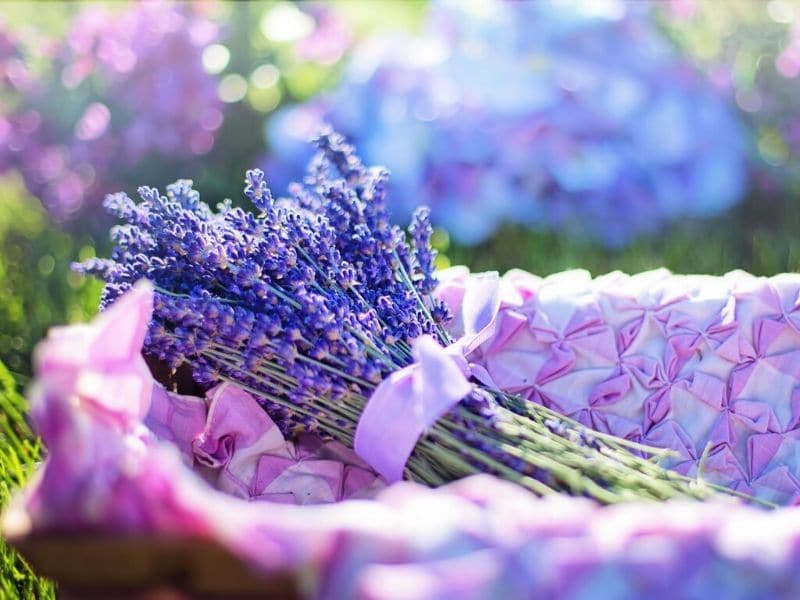
This is one of the most amazing varieties of Lavender because their flowers are very large and have a distinct color. They tend to be deep violet and or blue.
It also has a very sweet scent and it likes to be fully exposed in the sun. It usually blooms right in the middle of the summer, when you least expect it.
However, their flowers tend to dry up very quickly.
Melissa
It is one of the prettiest Lavenders because its flowers have a soft lilac color. They bloom once each summer, and they have flower spikes that can grow really tall.
Nana Alba
They are one of the few Lavenders that have white flowers. They have silver-green foliage and their scent could last for hours.
Lavenite Petite
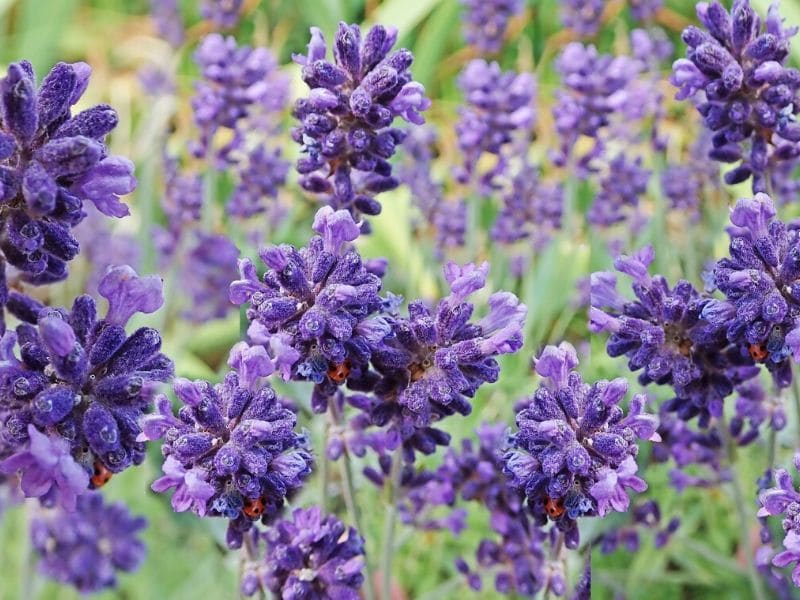
It originated in New Zealand. These flowers are easily recognized because they are pom-pom shaped. Also, they usually are very dense and once you get one you will get a couple more.
You will be able to smell these Lavender types from very far away. It likes to bloom in the late spring.
Thumbelina Leigh
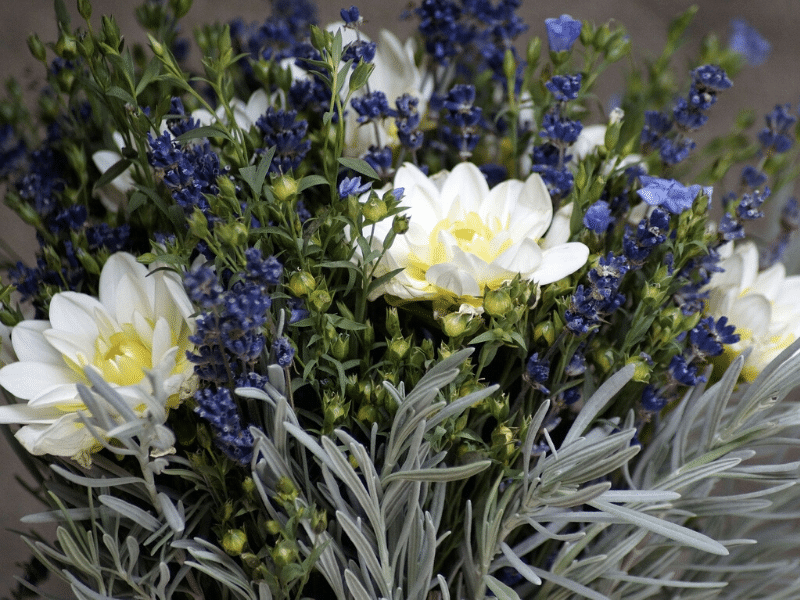
This type of Lavender has a two-tone flower which is a mixture of violet and blue. They have a lovely and strong scent and if you don’t have much space, then you can plant this type in small containers.
Munstead
They don’t have many flowers, but they are still beautiful. They are very spread out from one another and they have rosy-purple flowers.
Rosea
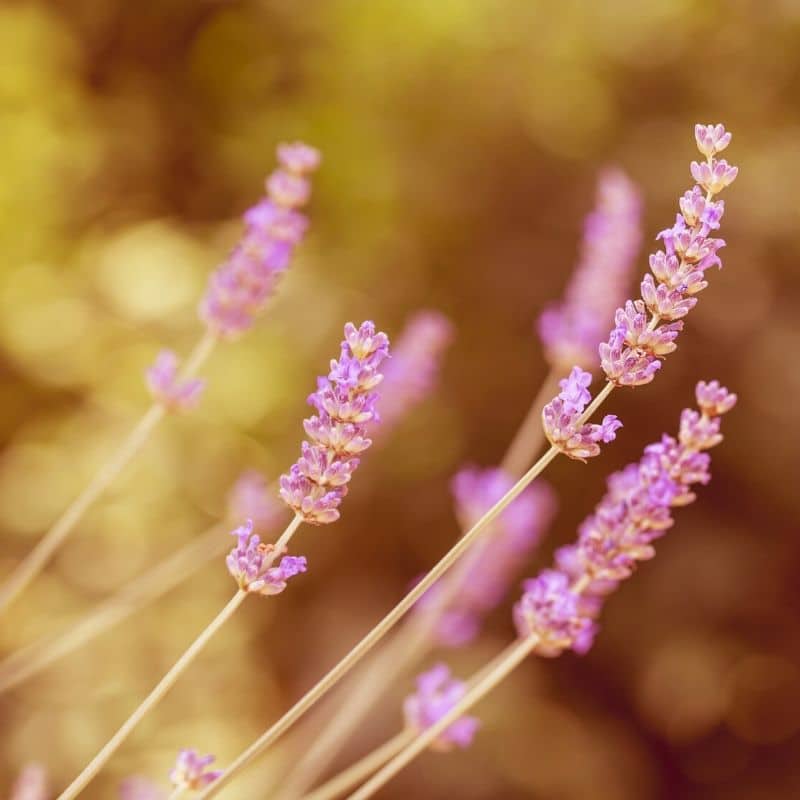
They love to receive the sun rays directly. Roseas can have pale pink flowers and have a nice scent. They are easy to propagate.
Portuguese Lavenders, (Lavandula Latifolia)
Broadleaf
This type has a strong fragrance. They have green foliage that makes it look similar to fur. Their sweet scent attracts bees and butterflies alike. They love to have direct sun staring at them and they prefer warm climates. They are natives to the Mediterranean.
Portuguese Giant
One of the newest Lavenders in the market, and as its name suggests, its flowers are huge.
They are bee friendly and they love to be exposed to the sun. They tend to bloom during late spring.
Hybrid Lavenders, (Lavandula x Intermedia)
Impress Purple
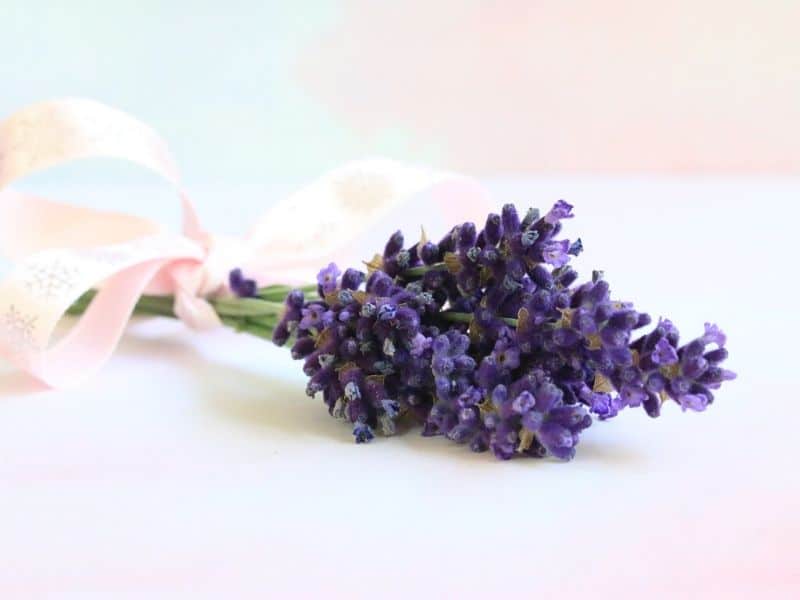
Usually, Impress Purple Lavenders are used in bouquets, because they tend to have tall bunches of dark purple flowers that will catch everyone’s attention.
Even their color is different because it is very dark in comparison to the rest of the Lavenders.
Hidcote Giant
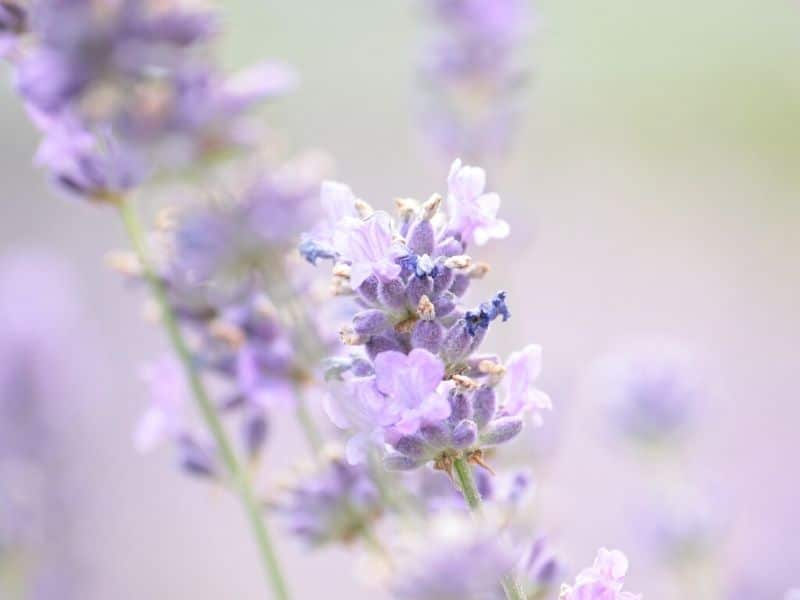
Another type of Lavender that offers huge stems. Its flowers are a very subtle violet and they spread out nicely in any garden. It has a strong fragrance that makes bees and butterflies go wild.
They also love the heat and the summer.
Lavandin
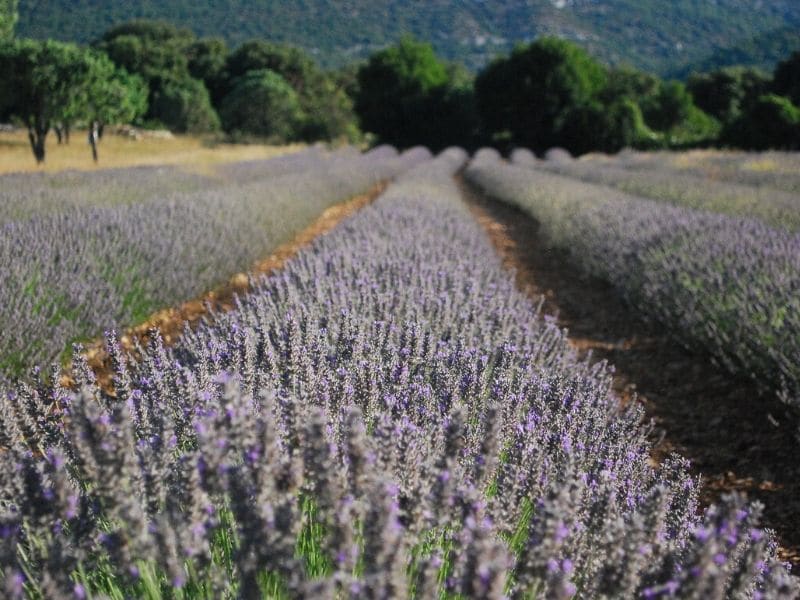
This is a hybrid that was born out of the combination between a Portuguese Lavender and an English Lavender. Therefore, Lavandin is resistant to cold weather and warm weather alike, because it combines the best traits of both Lavenders’ varieties. They will spread out quickly, they are easy to maintain and have a wonderful aroma.
Provence
This is one of the few Lavenders that love humid areas and being indoors. They smell really strong and can grow up to three feet tall.
Grosso
They have very tall and dark stems. Their flowers are dark purple, but their scent is not that strong. This type of Lavender is unusual because they love the cold (3).
Seal
These are one of the tallest Lavender plants, as they can reach up to three feet high. If you have a garden filled with rocks, then you need to plant this type of Lavender as they tend to grow everywhere, even in difficult areas.
Their fragrance is not as strong as other types, but they go great in potpourri bags or even sachets.
Phenomenal
They like to bloom early, thus, they are attractive to butterflies and bees. They can grow up to 30 inches tall and they have violet-blue petals.
Egyptian Lavender, (Lavandula Multifida)
They have furry leaves making them look very different from other types of Lavender flowers. They also have a very different smell, which can come across as being acidic. They spread out quickly.
French Lavender, (Lavandula Dentata)
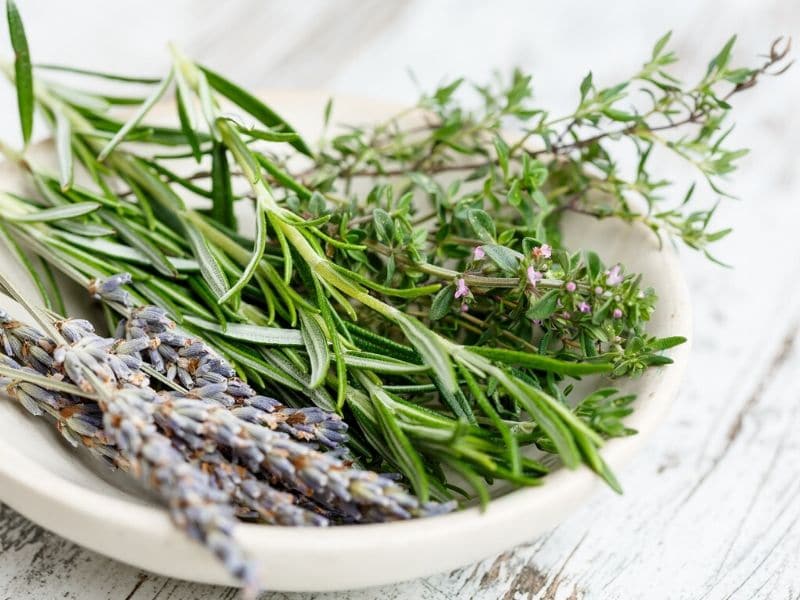
This is a very delicate flower and its color is usually paler than the rest. Even though it can grow well, they don’t tolerate extreme weather conditions.
Dwarf Lavender
They love the sun and can resist high temperatures, despite their size. Place them under a shadow and they will also enjoy their new place.
Don’t overwater them or else they won’t grow.
Growing Lavenders: Everything You Need To Know
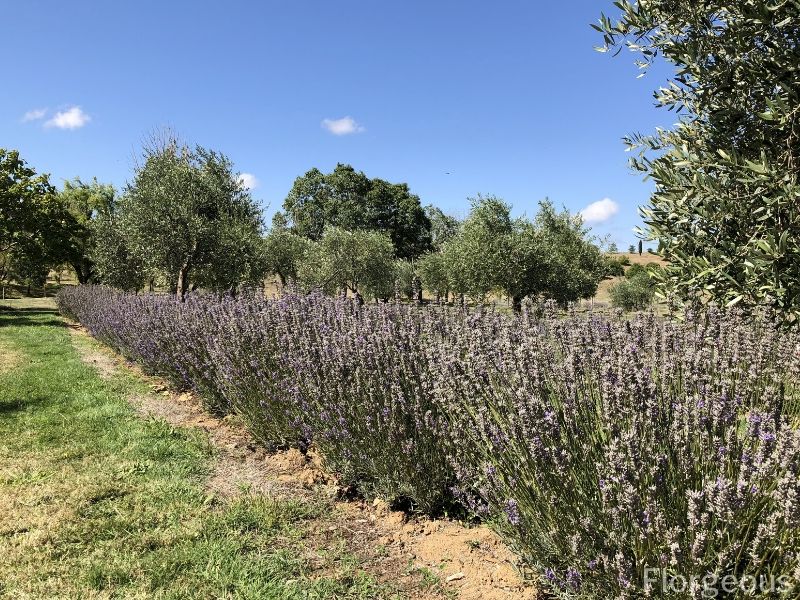
Growing Lavender Outdoors
If you live in a cold area, then you should try to plant your lavender during the spring or even early summer.
However, if you live in a warmer area, then you should plant your lavenders in the early fall, this way you will allow your plant’s roots to get comfortable in the soil and to adapt themselves to the new environment.
Lavenders tend to be okay if their soil is not too fertile, so don’t worry about spreading organic matter or even placing mulch.
If your soil is neutral or slightly alkaline, then your lavender plant will be truly grateful for it.
Try squeezing lime or lemon juice all over the soil where you have planted your lavender, this way your soil will reach a nice pH for the plants.
Growing Lavender Indoors
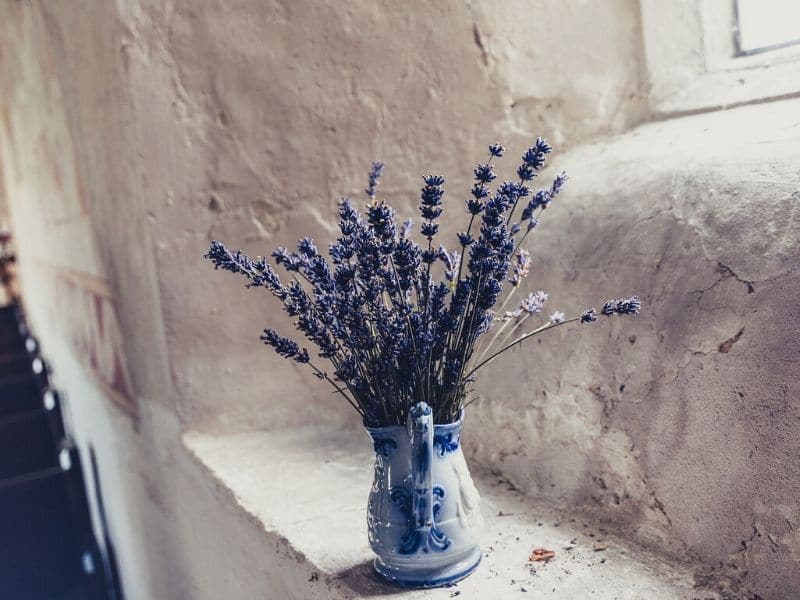
There are quite a few requirements if you are trying to grow lavender indoors, however, don’t be scared about it, it is not impossible to do so.
You will first need to make sure that the pot you have is the right size for your plant because your plant’s health will depend on this.
In addition, try placing your pot right under the sun, so if you have a big window this will be the perfect place for it.
See more: How to grow lavender in pots
Planting Lavenders
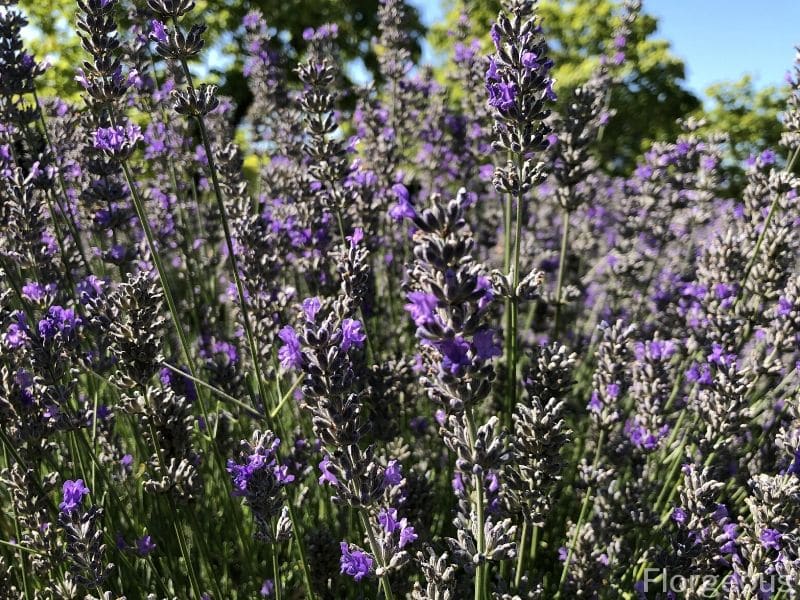
Planting Lavenders is fairly easy, you just need to place your Lavender in a type of soil that perhaps is not good enough for other types of plants, because, unlike many other plants and flowers who need good soil, Lavenders will actually thrive in poor soil conditions.
You will first need to make sure when is the right phase of the moon in order to plant your lavenders. This way they will receive all the extra help they can get in order to be strong and healthy plants.
Once you are ready to plant, you need to dig a hole that will be twice as big, deep and wide as your lavender plant.
Then, you can place the plant in the soil, and, if needed, you can help to spread the roots carefully.
Do this softly otherwise you may break them and your plant will have a hard time growing.
If your lavender soil is dry, then you should water your plant, but try not to over-water them as they hate this. If the soil has nice moisture, then leave it like that.
Lavenders Pests and Diseases
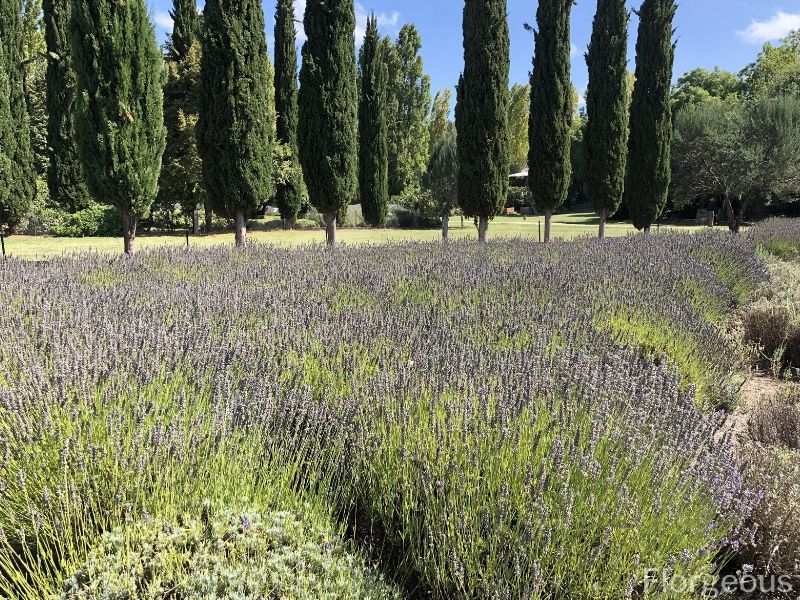
A good thing about having Lavenders is that they are so easy to take care of you will almost feel as if you are forgetting to do something to them (5).
And because they don’t need much water – hardly any to be honest – then you can be relaxed knowing that they won’t get too sick either.
If you avoid fertilizers and if you don’t add compost or any other organic matter to your Lavender plants, then you are more than halfway there into achieving and growing a healthy Lavender plant.
Lavenders’ Maintenance

Most lavender varieties require little effort on your behalf to make them grow. When it comes to lavender care, you just need to make sure they have lots of suns, and well-draining soil.
In fact, you don’t even need to water them constantly, because they don’t really need all of that water.
They are easy to care for, and they can grow pretty much everywhere. Just provide them a safe and right type of environment and you will soon realize how much they love spreading out.
For example, you must take into consideration the climate you have where you live. So, if the weather around you is cold then you probably need to plant an English Lavender.
On the other hand, if the weather is hot, then you will love to plan a Spanish lavender.
And if your weather is constantly changing, then you need to plant a Hybrid Lavender because they are tolerant of both cold and hot weather.
Pruning Lavenders
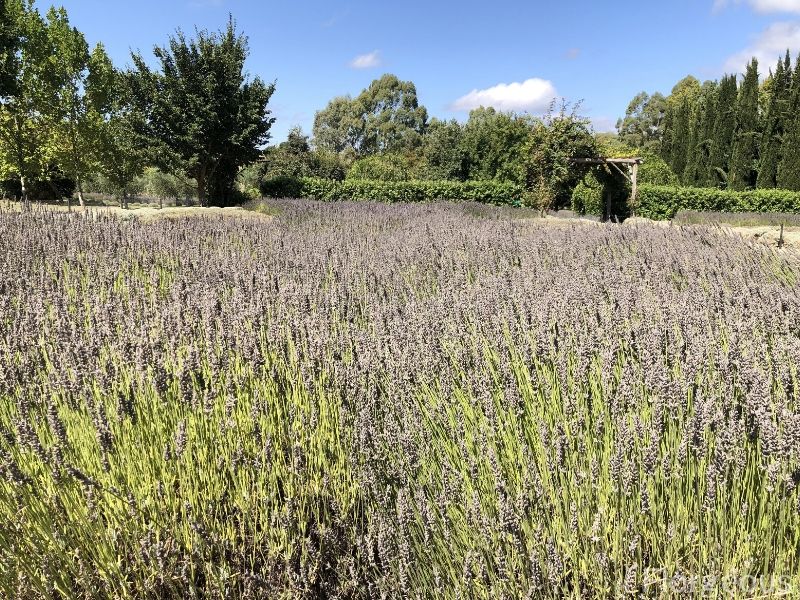
If you don’t pay much attention to your Lavender, you will soon notice how they can grow and spread everywhere. This is why you must prune your plant.
You’ll be good if you prune it thoroughly once or twice each year, and you should definitely do this in early spring, early fall or even both.
Whenever you cut your Lavender you will see that they start growing with more strength, because they really enjoy being pruned.
You can take advantage of this and try to reproduce it as much or as little as you would like to.
Benefits and Uses of Lavenders
Medicinal Uses
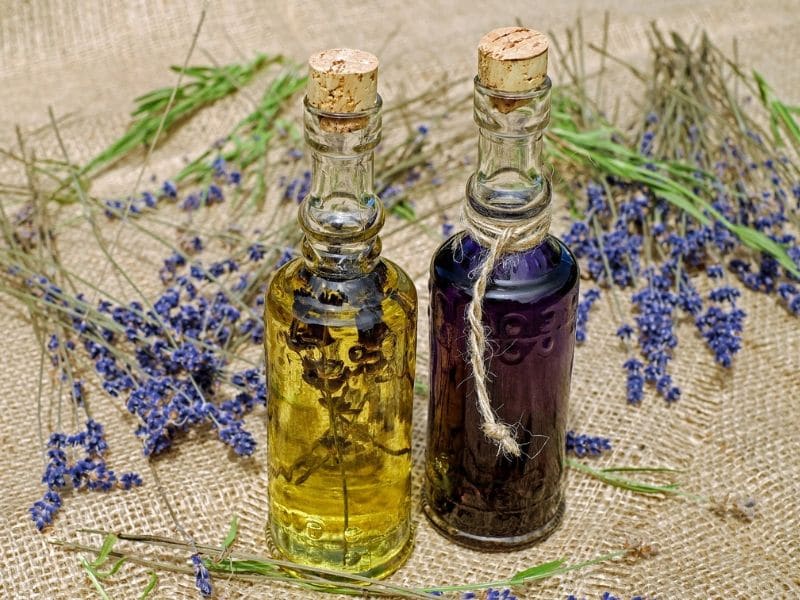
Lavenders have many properties because they are antiseptic and anti-inflammatory plants, thus, lavenders can help when accidents happen and there are burns, for example (6).
They can also be used as a layer of protection in your skin because they will repel all mosquitoes. In fact, lavender is one of the best plants that keep mosquitoes away.
Some argue Lavenders can help to treat anxiety, especially in those who have tried western medicine but don’t feel comfortable taking one pill after another.
Fragrance Uses
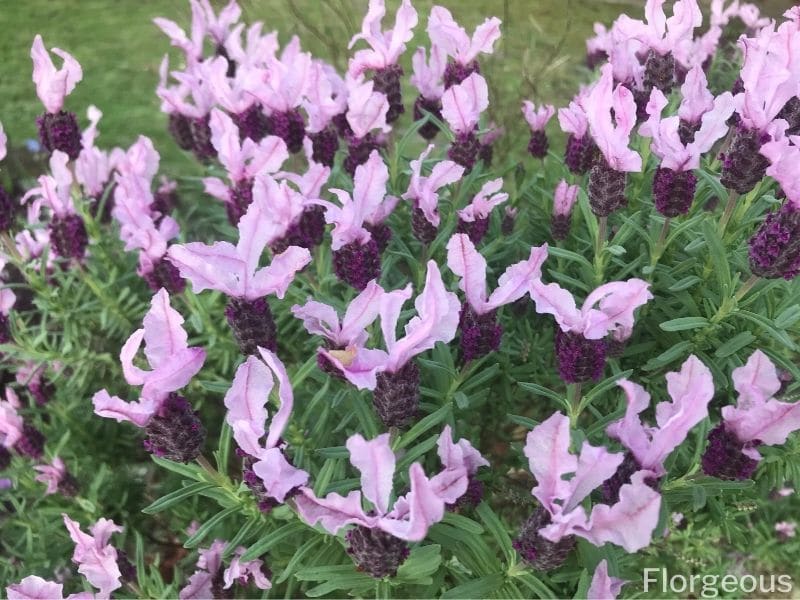
Lavenders are widely used as an essential oil in aromatherapy. Although Lavender itself doesn’t cure anxiety, it does help a person to feel calmer, reduces stress and sometimes even mild pain (7).
Craft Uses
If you are looking into ways of using your lavender flowers, then look no further. In most cases, you will be required to dry the flowers first.
This process is simple though. You only need to bundle them up with a string or ribbon in order to make a small bouquet; hang them upside down to try them and voilá!
You can do a mix of different types of compatible flowers and place them all inside a small pillow. This can be perfect as a souvenir for your baby shower, or even as a present for a new mom or dad.
If you or anybody you know suffer from menstrual cramps, then you can try and make a heating pad. Choose your favorite fabric, fill it with rice and lavender and then sew it all up. Now you have a heating pad that is ready to be used.
Culinary Uses
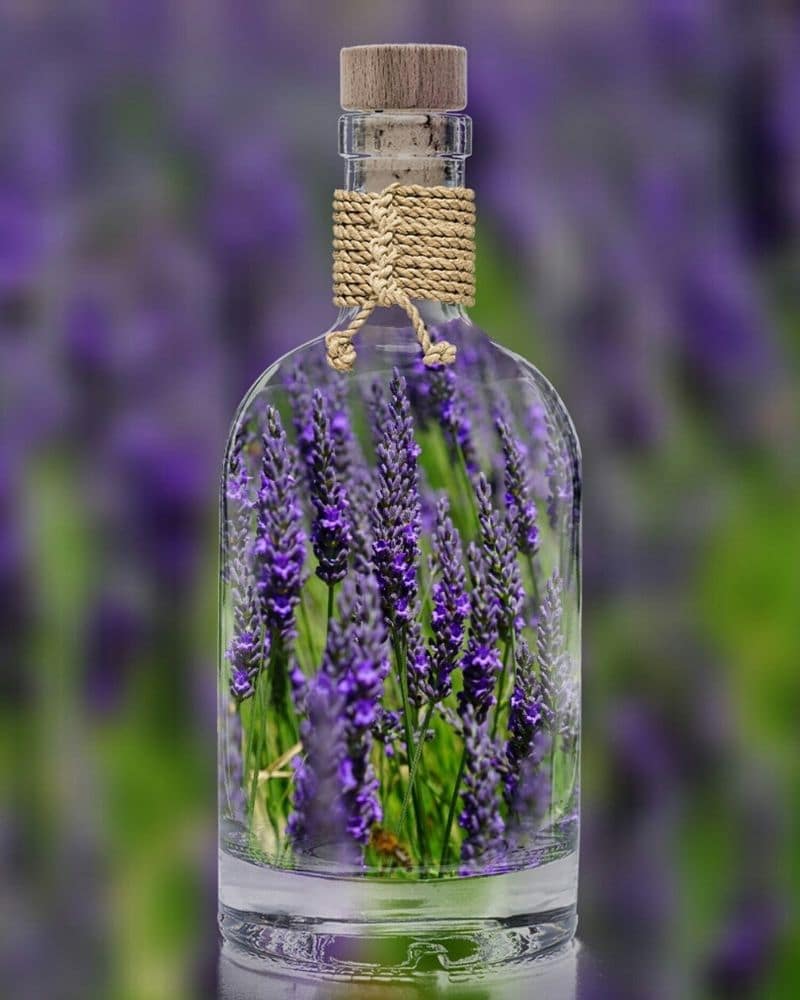
Lavender flowers can be used in a wide range of dishes. The most commonly used lavender species is in L. angustifolia, which is non-officially referred to as the English Lavender.
Lavender can also be used as a spice or condiment for your dishes. But it’s recommended that you use dried buds. The important thing is to start little by little and see what works for you.
Another good mixture is pairing lavender with desserts. You can either place lavender flowers as a decorative item, or you can use it in your dough mix.
And if you are looking for a pro-tip, then this one’s for you: you can put your lavender buds (which are the flowers) with sugar into a glass jar, and you must close it properly.
Let it rest for two weeks, this way all the essential oils and fragrance will slowly transfer to the sugar. Then, whenever you are about to make a dessert, use this sugar in your recipes.
You can also use the green bits of the lavender flower. In fact, in any dish you make with rosemary, you could swap it with lavender. Or you can place both and it’ll taste even better.
If you love to drink tea, then try a lavender tea, it will help you relax in no time.
Other Uses
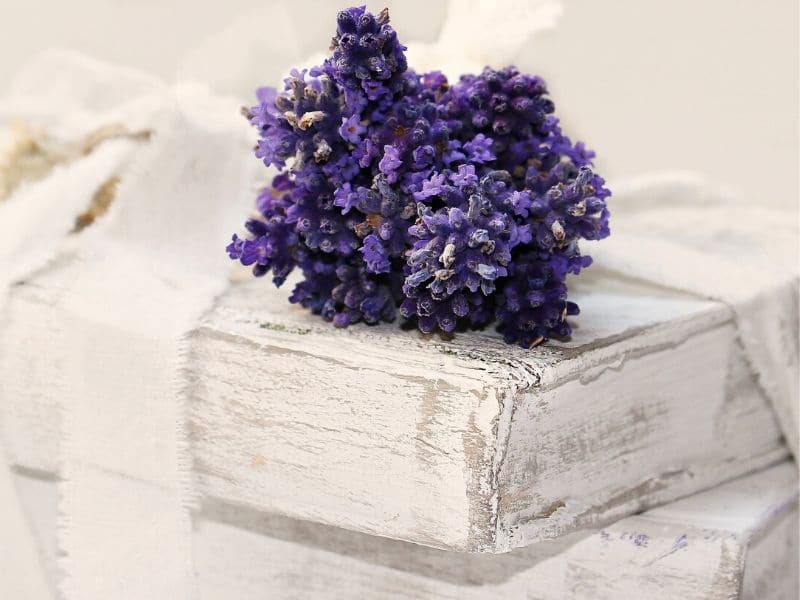
Lavender Playdough
If you have a child who is easily overstimulated then why don’t you help them to calm down with a playing technique? Or perhaps you work at a preschool and are looking into different types of playdough that don’t become toxic to children? (8).
Lavender playdough is very easy to make as you only need these ingredients:
- 2 cups of flour
- 2 tablespoons of olive oil
- ½ cups of salt
- 2 tablespoons of cream of tartar (or any other similar cream you can either find or make)
- 1 cup (or 2 cups) of boiling water.
- 1 cup of dried lavenders
You simply need to mix all ingredients together and start kneading it. And the best thing about it is that kids can help to make this! Just make sure an adult is there so he or she can put the boiling water.
Common Questions About Lavender Flowers
Here are some answers to the most frequently asked questions about lavender.
What does the Lavender Flower Symbolize?
Lavender flowers have often been associated with silence, purity, grace, relaxation, and calmness. In addition, purple is the color of royalty and elegance, thus, it is fair to say that Lavender flowers are the epitome of these traits.
See more: Lavender Flower Meaning and Symbolism
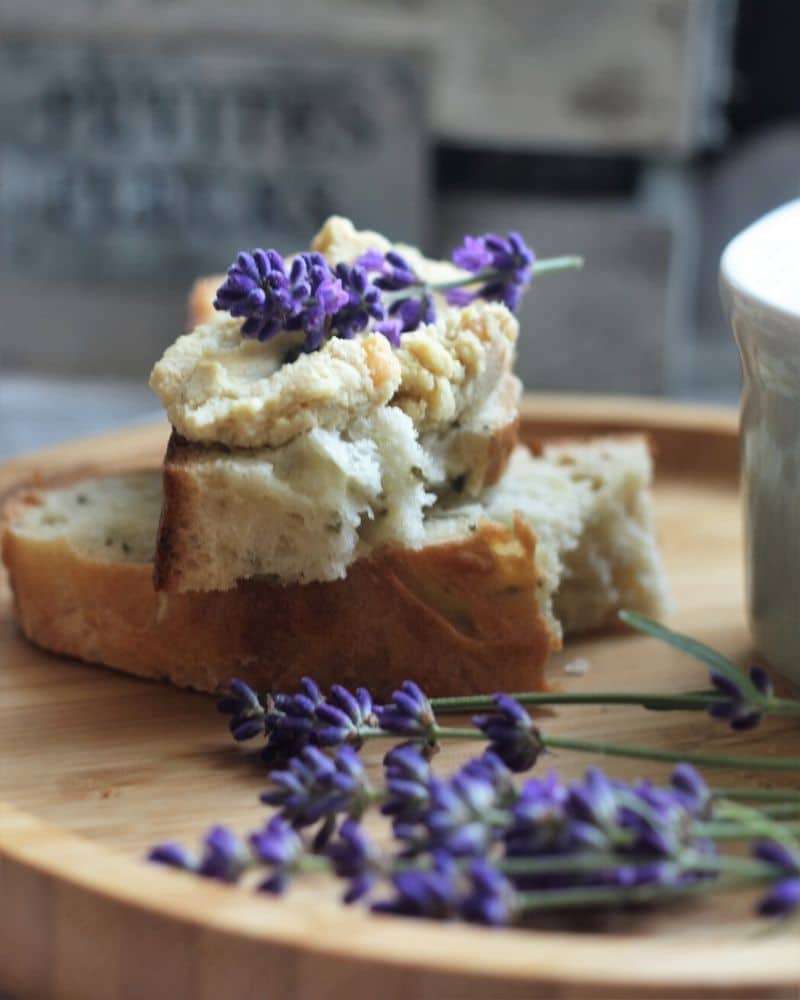
What is the difference between the different lavender plants?
The main differences between lavender plants lie in their size, flower color, fragrance, and hardiness. English lavender (Lavandula angustifolia) is often preferred for its sweet fragrance and compact size, while Lavandin varieties (Lavandula x intermedia) are larger with a slightly different scent. Spanish lavender (Lavandula stoechas) has distinctive “rabbit ear” bracts on its flowers.
Which lavender is most purple?
Lavandula angustifolia varieties are typically known for their deep purple flowers, and some popular cultivars include ‘Hidcote’ and ‘Royal Velvet.’
Which lavender smells best?
The “best” smelling lavender is subjective, as different people may have different preferences. However, Lavandula angustifolia varieties are often favored for their sweet and soothing fragrance. Popular aromatic cultivars include ‘Munstead’ and ‘Provence.’ It’s recommended to explore different varieties and choose the one whose scent appeals most to you.
Conclusion
Lavenders are stunning plants that will make your house feel like home. Their scent is truly addictive, mainly because they also make you feel relaxed (9).
This is why lavenders are considered as a beneficial plant to have nearby because they will help you sleep better, they will relieve pain if you have any and they will also give you a little mental health boost and that is always needed!
Nowadays you can incorporate lavender plants into your life by planting them, bathing in them or even cooking with them.
See more: What to plant with lavender
References
Reference list
- https://newcropsorganics.ces.ncsu.edu/herb/lavender-history-taxonomy-and-production/
- Koulivand, P. H., Khaleghi Ghadiri, M., & Gorji, A. (2013). Lavender and the nervous system. Evidence-based complementary and alternative medicine : eCAM, 2013, 681304. https://doi.org/10.1155/2013/681304
- https://www.wnc.edu/files/departments/ce/sci/attralavender.pdf
- https://newcropsorganics.ces.ncsu.edu/herb/lavender-history-taxonomy-and-production/
- https://www.wnc.edu/files/departments/ce/sci/attralavender.pdf
- Koulivand, P. H., Khaleghi Ghadiri, M., & Gorji, A. (2013). Lavender and the nervous system. Evidence-based complementary and alternative medicine : eCAM, 2013, 681304. https://doi.org/10.1155/2013/681304
- https://www.ncbi.nlm.nih.gov/pubmed/22517298
- Sayorwan, Winai & Siripornpanich, Vorasith & Piriyapunyaporn, Teerut & Hongratanaworakit, Tapanee & Kotchabhakdi, Naiphinich & Ruangrungsi, Nijsiri. (2012). The Effects of Lavender Oil Inhalation on Emotional States, Autonomic Nervous System, and Brain Electrical Activity. Journal of the Medical Association of Thailand = Chotmaihet thangphaet. 95. 598-606.
- https://www.sciencedirect.com/science/article/pii/S0944711319303411
Close

